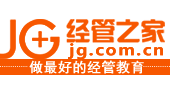-
提问 悬赏 求职 新闻 读书 功能一区
-
经济学人 二区
-
经济学论坛 三区
-
新商科论坛 四区(原工商管理论坛)
-
计量经济学与统计论坛 五区
-
数据科学与人工智能
-
金融投资论坛 六区
-
会计与财务管理论坛 七区
-
世界经济与国际贸易 八区
-
考研&考博&留学 九区
-
网络课堂 十区
-
站务区 十一区
-
休闲区 十二区
-
文库首页
- 热门文库
- 经管教学课件kindle电子书2万+全球顶级名校/投行英文文献 3000+世界顶级中英文杂志报刊【金融+经济+商学+国际政治】核心期刊投稿交流金融科技和互联网金融系列汇总【行业报告大全】BAFE文摘经管之家-Wiley文库【数学+统计+计算机编程】金融工程wwqqer系列汇总Shibor【历史+心理学+社会自然科学】2019经济报刊周刊精选经管之家-经典教科书出版社文库日新文库:Stata入门及进阶国内外经管期刊存档行为决策+行为经济学+行为金融经管之家-Springer文库Super CPA+CFA+ACCA+FRM Club学术杂志投稿经验微宽菜鸟吧产业研究院行业发展前景研究报告研报客-行业报告分享努力努力再努力Question & Answer(题库)金融万象Financial Vientiane学道会最美学习笔记Python ProgrammingFinancial Times 金融时报日新文库:高级经济学及经济数学上海财经大学课件、习题答案大全高清PDF【KYCHAN文库】外文杂志(sci ssci)投稿指南论文写作投稿实战IRT在家读MBA







 扫描二维码 下载应用
扫描二维码 下载应用



 京公网安备 11010802022788号
京公网安备 11010802022788号
您好,如需购买由经管之家论坛代理的普林斯顿出版社的原版精装书籍,欢迎添加客服微信咨询。请加客服微信:dzc123dzc
书评摘要:
What modern economics can tell us about ancient Rome
The quality of life for ordinary Roman citizens at the height of the Roman Empire probably was better than that of any other large group of people living before the Industrial Revolution. The Roman Market Economy uses the tools of modern economics to show how trade, markets, and the Pax Romana were critical to ancient Rome's prosperity. Peter Temin, one of the world's foremost economic historians, argues that markets dominated the Roman economy. He traces how the Pax Romana encouraged trade around the Mediterranean, and how Roman law promoted commerce and banking. Temin shows that a reasonably vibrant market for wheat extended throughout the empire, and suggests that the Antonine Plague may have been responsible for turning the stable prices of the early empire into the persistent inflation of the late. He vividly describes how various markets operated in Roman times, from commodities and slaves to the buying and selling of land. Applying modern methods for evaluating economic growth to data culled from historical sources, Temin argues that Roman Italy in the second century was as prosperous as the Dutch Republic in its golden age of the seventeenth century. The Roman Market Economy reveals how economics can help us understand how the Roman Empire could have ruled seventy million people and endured for centuries.